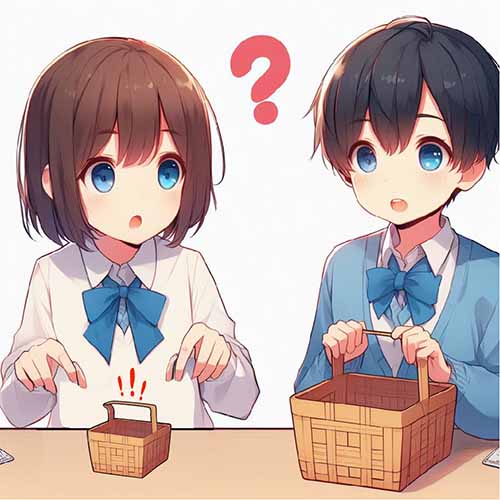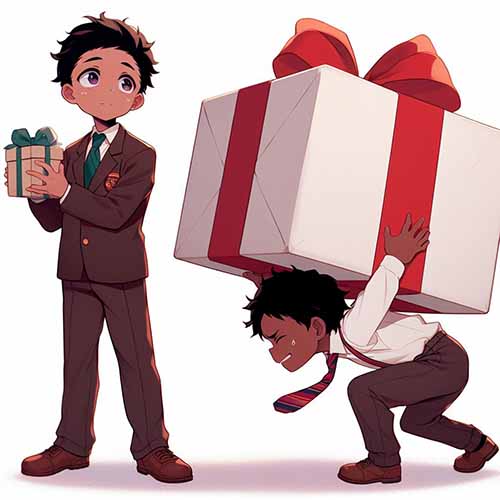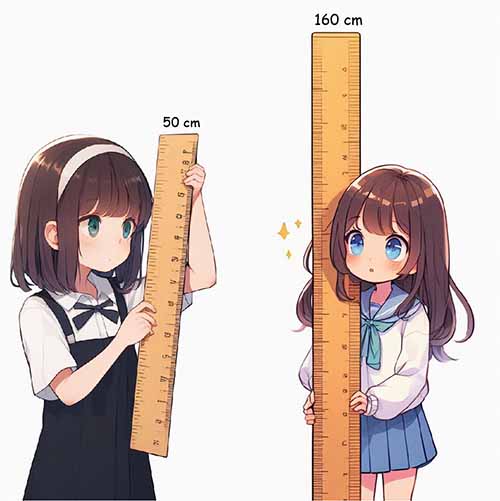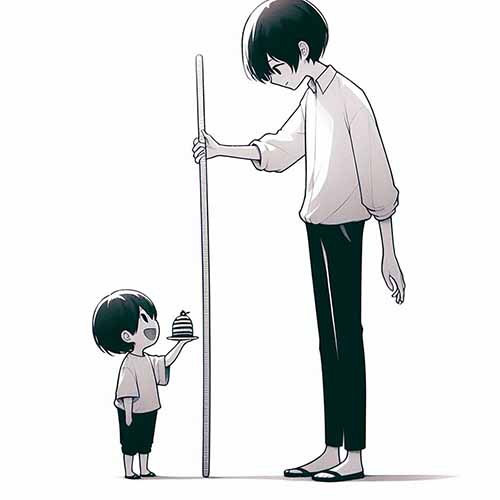Size Matters: Exploring Size with Pre-K and Kindergarten Learners | Lesson Plans
-

Persons and cans with different sizes - By BING -
Teaching size concepts in math is a great way to help young learners develop their spatial awareness, comparison skills, and vocabulary. Size concepts such as holds more or less, light and heavy, long and short, and taller and shorter are essential for understanding measurement, geometry, and number sense.
This page will show you how to use MathSkills4Kids videos to teach and practice these size concepts in your classroom.
Introduction: The benefits of teaching size concepts in math
Size concepts are part of the early math curriculum for pre-K and kindergarten students. They help children learn to compare and contrast objects based on their attributes, such as length, weight, capacity, and height.
By learning size concepts, children can also develop their language skills, using words like big, small, longer, shorter, heavier, lighter, more, and less to describe what they see and do. Size concepts also prepare children for more advanced math topics, such as measurement units, fractions, decimals, and ratios.
-
SIZE
-
BROWSE THE LESSON PLANS
-
-
The basics of holds more or less
One of the first size concepts that children learn is holds more or less. This concept involves comparing the capacity of different containers or shapes based on how much they can hold. For example, a cup holds more water than a spoon, and a square holds more space than a triangle if they have the same height.
To teach this concept, you can use the MathSkills4Kids video "Holds More or Less: How to Teach Size and Measurement to Pre-K and Kindergarten Kids with Fun Videos." This video explains the concept of holds more or less with colorful animations and examples. You can also use the accompanying worksheets to practice the concept with your students.
READ FURTHER
-
The basics of light and heavy
Another size concept that children learn is light and heavy. This concept involves comparing the weight of different objects based on how much they weigh. For example, a feather is lighter than a book, and a book is heavier than a pencil.
To teach this concept, you can use the MathSkills4Kids video "Heavier or Lighter? Learn Size and Measurement for Pre-K, Kindergarten and First-Grade." This video explains the concept of light and heavy with fun characters and scenarios. You can also use the interactive games to practice the concept with your students.
-
The basics of longer and shorter
A third size concept that children learn is long and short. This concept involves comparing the lengths of different objects based on how long they are. For example, a snake is longer than a worm, and a worm is shorter than a pencil.
You can use the MathSkills4Kids video "Shorter or Longer? Learn Size and Measurement for Pre-K, Kindergarten & 1st Grade | MathSkills4Kids" to teach this concept. This video explains the concept of long and short with engaging examples and activities. You can also use the printable cards to practice the concept with your students.
-
The basics of taller and shorter
A fourth size concept that children learn is taller and shorter. This concept involves comparing the height of different objects or people based on how tall they are. For example, a giraffe is taller than a dog, and a dog is shorter than a person.
You can use the MathSkills4Kids video "How to Teach Pre-K, Kindergarten, and First-Grade Kids about Size and Measurement: Shorter vs. Taller" to teach this concept. This video explains the concept of taller and shorter with cute illustrations and questions. You can also use the online quizzes to practice the concept with your students.
Advanced skills in size comparison and estimation
After learning the basic size concepts, children can move on to more advanced size comparison and estimation skills. These skills involve comparing multiple objects or groups based on their size attributes, such as which group has more or less objects, which object is the longest or shortest among several options, or which object is closest to a given measurement.
These skills also involve estimating the size of an object or group without measuring it precisely, such as guessing how many cups of water can fill a bottle or how many pencils can fit in a box.
-
Conclusion: How to extend size learning beyond the classroom
Size concepts are not only crucial for math learning but also for everyday life. Children can apply their size knowledge to various situations and contexts, such as sorting their toys by size, measuring their height or shoe size, or choosing the right clothes or utensils for themselves.
To extend size learning beyond the classroom, you can encourage your students to explore size in their home environment, such as by measuring their furniture or appliances with a ruler or tape measure, comparing the weight of different items in their kitchen or bathroom with a scale or balance, or estimating how much food or liquid they need for a meal or a drink.
Use the MathSkills4Kids videos and resources to review and reinforce size concepts at home.
Thank you for reading this page on how to teach positions to pre-K and K students using MathSkills4Kids videos. We hope you found it helpful and informative. If you have any questions or feedback, please contact us. Moreover, do not forget to subscribe to our channel for more fantastic math videos for kids!
Please CLICK THE SHARE BUTTON to allow others to benefit from this content!
Happy teaching!




